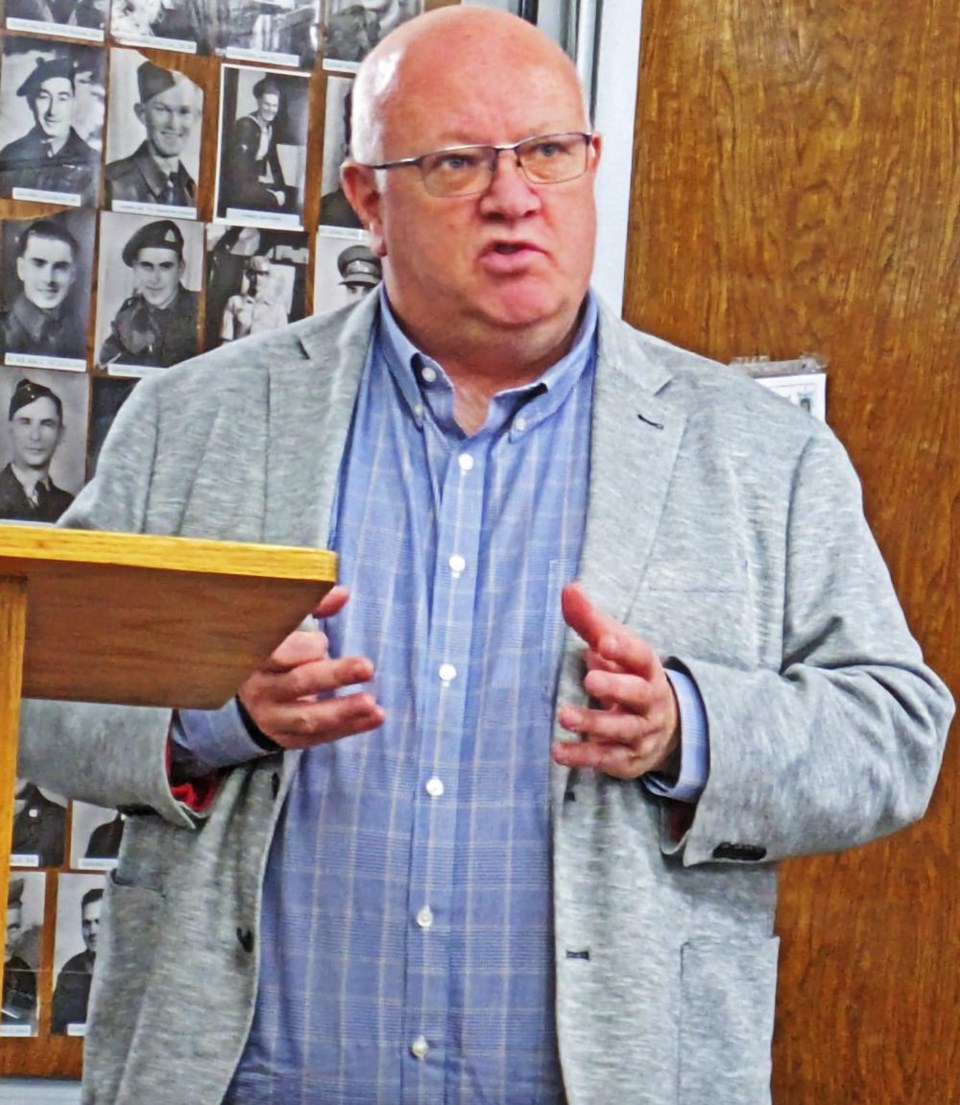WEYBURN – Saskatchewan’s auto dealers contribute significantly to the province’s economy, and are going to be facing some very significant challenges in the coming years, particularly due to federal environmental policies and mandates.
This was part of the message passed on by Larry Heggs, executive director of the Saskatchewan Automobile Dealers Association to the Weyburn Rotary Club on Thursday at the Weyburn Legion Hall.
The association is a non-profit advocacy group for dealers of new vehicles in Saskatchewan, with 133 dealerships of 18 makes in the province currently. He noted they do not have used car dealers or corner garages as part of their membership, which is voluntary for auto dealers.
The association has a foundation and charity division, with the group sponsoring Camp Easter Seals as one of their recipients.
They have an educational foundation focused on skilled trades in the industry, such as parts specialists and auto body mechanics as two examples, and they support Georgian College in Barrie, Ont., currently the only school in Canada to offer a business course related to automotive dealerships.
One of the main purposes for the association is advocacy with municipal, provincial and federal governments, said Heggs.
At the municipal level, if a dealer needs help dealing with the municipality for zoning, for example, the association can help out. Provincially, the association meets twice a month with the minister of Immigration and Trade, Jeremy Harrison, and twice a year with Premier Scott Moe, on provincial issues.
Federally, the association is part of the national group, the Canadian Automobile Dealers Association, and they advocate on issues with MPs and the federal government.
A second pillar or purpose is education, such as with the public about what auto dealers do, and education through the Distance Learning Centre. Some schools had an automotive program, and the association is supporting the DLC to offer the program to students taking distance ed programs.
Recruitment for the industry is also part of the association’s mandate, and are busy at career fairs, and large job fairs (such as in Toronto, Calgary and Vancouver) where they recruit people to come work in Saskatchewan.
Economically, the auto dealers sell on average about 42,000 new vehicles a year, and directly employ 5,380 people across the province, 56 per cent of which are skilled trades.
The sales translates to revenues of about $4.8 billion annually, which puts the industry at sixth place in the province, with over 7,400 full-time equipment jobs, provides $346 million in wages a year, $93 million in federal taxes (as of 2022), and $16 million in municipal taxes (as of 2022).
Heggs noted that just the taxes on new construction or renovations to dealerships alone brings in $3.9 million a year.
In terms of community involvement, Heggs said the province’s dealerships contribute about $2.5 million in donations and community sponsorships a year.
Touching on the issue of alternative fuels, with the federally-mandated goal of 2035 for all new vehicles sold to be electric vehicles, Heggs said there are some major concerns from auto dealers on this issue.
“It’s a big ask,” he said, noting the association is not against going to EVs, but there needs to be infrastructure in place to handle it, and Canada just does not have it at this point.
Using California numbers to estimate the number of chargers needed for the volume of electric vehicles on the road, the numbers are calculated from 5.6 per cent of EV sales. As of 2021, there were 20,000 charging stations all across Canada, and by 2026, Canada will require about 116,667 chargers to be in place.
By 2030, the need will jump to 383,33 chargers needed, and by 2035, over one million chargers will be needed across the country. He added this is just what’s needed for charging infrastructure, and does not address how this will impact the power grid loads across the country.
Going by statistics of how new technology gets accepted by the population, generally 12 per cent will get it right away because they want it. The next biggest group will generally get it when it makes economic sense to them, and “that’s the biggest group that needs to be tapped.”
“Do I doubt if the technology will get there? Yes, it will get there – but when?” he asked.
The problem, he added, is without government help for the infrastructure, the number of chargers needed just will not be in place by the target year of 2035.
Currently in Saskatchewan there are 166 chargers available now, which is short of what’s needed for 2035 by about 57,949 charging stations.







